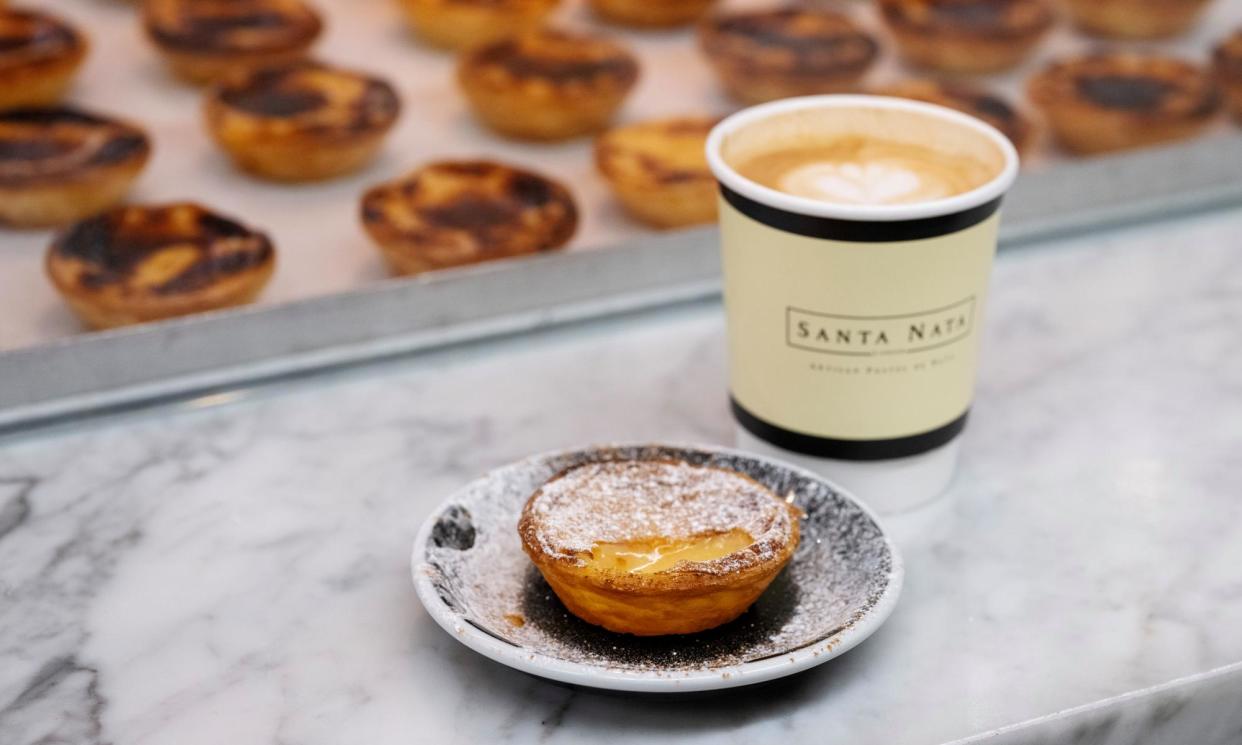Love at first bite: how Britain fell for a little Portuguese custard tart

Francisco Oliveira was working in finance in Lisbon when he decided to move to London to sell custard tarts.
The son of two bakers, he could see Britons were developing a taste for the traditional Portuguese pastel de nata, but his plans for the new business were nonetheless bold – to sell tarts and not much else.
Five years on, Oliveira is making plans to open his fourth Santa Nata pastelaria, or bakery, in London, with two more in Oxford and Bicester. On any given day, each can sell 1,000 pastéis de nata – and double that at busy times. In the capital, meanwhile, there are several other outlets and small chains doing a similar thing, having all built their businesses around this one, delicious product.
Why has Britain fallen so hard for this particular Portuguese pastry? According to Oliveira there are two explanations: “the popularity of Lisbon has really exceeded all of our expectations” and British people really like custard.
In recent years, the pastel de nata has been colonising the UK like never before. Once largely confined to delis or Portuguese bakeries, branches of Pret a Manger now offer them, as does Costa and Lidl. Sainsbury’s will sell you four for £2.25. Notably, only Aldi feels the need to translate the name.
And it’s not just in British chiller cabinets where the pastel de nata is grabbing attention. The plot of Yorgos Lanthimos’s fantasy drama Poor Things features a childlike woman discovering the world of pleasure – as shorthand for which, while in Lisbon, she scoffs an enormous quantity of pastéis de nata. That scene required its star Emma Stone to eat no fewer than 60, proving that even the most delectable pastry has its limits. “The first bite is delicious, but by the end you really want to puke,” she said.
What is it about these little puddles of burnt but wobbly custard, flavoured with lemon and cinnamon and cupped in a crispy pastry shell, that makes them so exceptional? To the Michelin star-winning Portuguese chef Nuno Mendes, chef-patron of Lisboeta in central London: “Honestly, they’re just gorgeous.”
Mendes, a Lisbon native, has cherished memories of his grandmother taking him to the Mosteiro dos Jerónimos, the monastery in the suburb of Belém whose monks have been selling them since 1837.
“I would ask her to order me a nata,” Mendes said, “and then steal her little coffee spoon. So with a spoon that still tasted of the coffee and sugar that she’d just had, I would just scoop up all of the inside of the pastel de nata, and then eat the pastry. That was a ritual that I had – I was fascinated.”
“Fast forward 30 years, and I see them everywhere,” he added. The only problem is that “in a lot of cases the quality is not great”.
The secret to a great pastel de nata is, according to Mendes, in the quality of the ingredients and care in preparation: always butter not margarine; never reheated from frozen; always using the proper method for the pastry bases, which, rather than stamped out of a flat sheet of puff pastry, are made from a tightly rolled pastry sausage, cut it into spiral discs and then moulded to fit the baking tray.
“These are the things that make them amazing,” he said.
The chef and cookery writer Jeremy Lee is Scottish rather than Portuguese, but has written of his great passion for pastéis de nata – when he first moved to the capital, he discovered a stretch of pastelarias in the area colloquially known as “little Portugal” in south London, “and my jaw hit the floor. It was love at first bite – and has remained so ever since”.
“The trick,” he says, “is to find somewhere that sells them at their very best, rather than some half-cocked version.”
The Portuguese have not historically been given enough credit for their “extraordinary” food culture, said Lee, who is chef-patron of Quo Vadis, and the pastel de nata exemplifies this. “They are just the perfect little mouthful – so perfectly made.”


